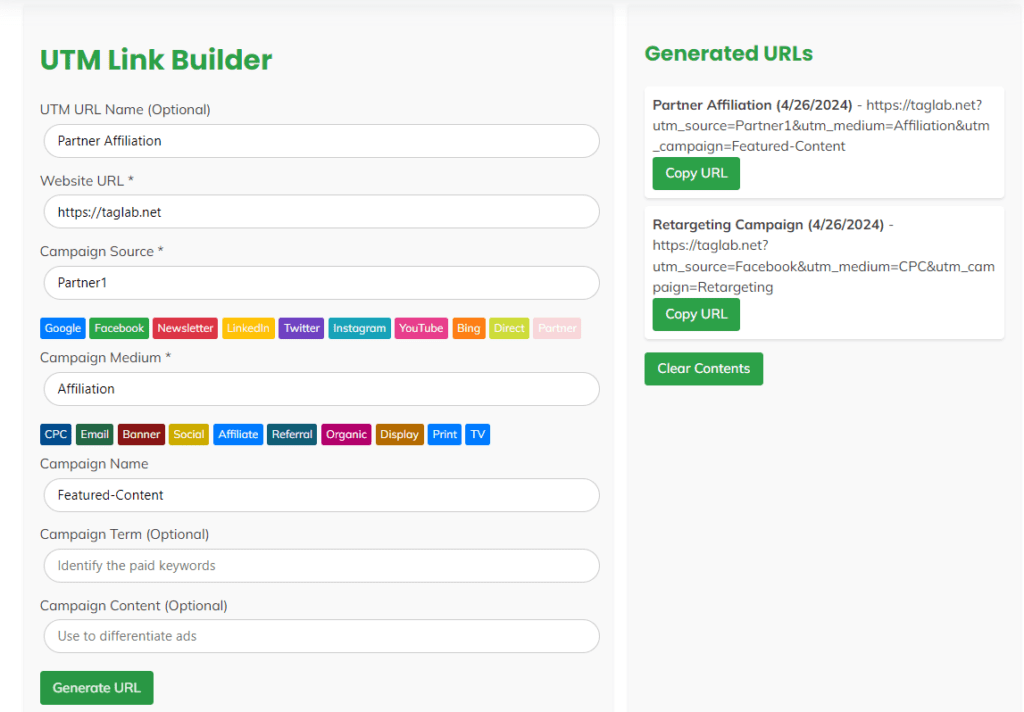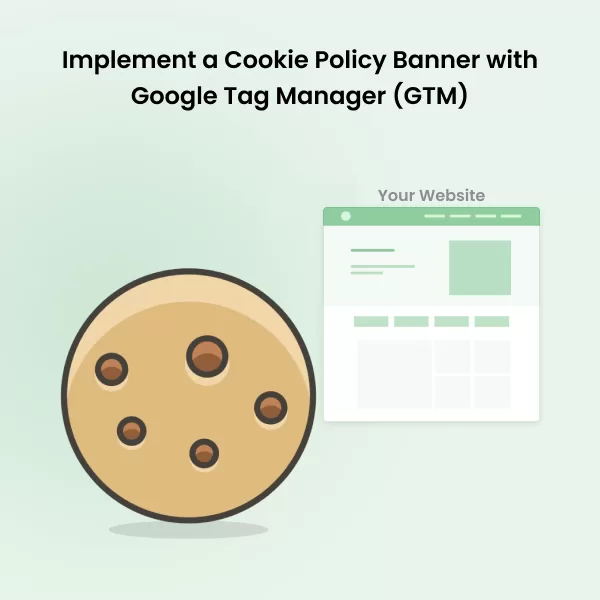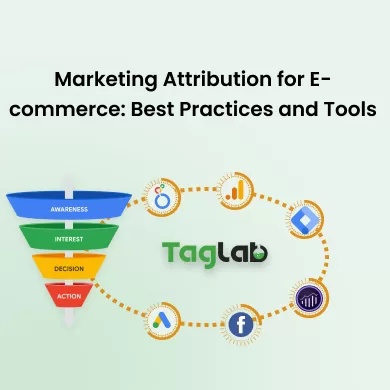Your cart is currently empty!
TAGLAB UTM Parameters Creator as an AlternativeGoogle URL Campaign Builder
Posted by:
|
On:
|
- Benefits of Using a UTM Builder for Campaign Tracking
- How to Use UTM Parmeters for Web Analytics and Campaign Tracking
- Pitfalls and Comon Mistakes When Using UTM Parameters
- TAGLAB UTM Parameters Creator as an Alternative to Google UTM Campaign Builder
- Core Functionalities of both TAGLAB & Google UTM Campaign Builder
- Dynamically Populating Google Ads Keywords into UTM Parameters
- Final Words
- Frequently Asked Questions
- What are UTM parameters?
- How do TAGLAB UTM Parameters Creator and Google’s UTM Builder compare in functionality?
- How does dynamic keyword insertion work in Google Ads?
- What is the {keyword} ValueTrack parameter and how is it used in UTM tracking?
- Why is keyword tracking important in digital marketing?
- How can I ensure accurate data collection with UTM parameters?
- Can UTM parameters affect SEO?
- What are the best practices for setting up UTM parameters for Google Ads?
- How can I track multiple campaigns with TAGLAB UTM Parameters Creator?
![]()
In the ever-evolving landscape of digital marketing, tracking campaign performance remains a cornerstone of success. One tool that stands out in this endeavor is the Google UTM Campaign Builder. However, emerging alternatives like TAGLAB’s UTM Parameters Creator offer enhanced features and capabilities, providing marketers with more robust tracking solutions. In this comprehensive guide, we’ll explore the fundamentals of UTM tracking, highlight the significance of both the Google UTM Campaign Builder and TAGLAB’s UTM Campaign Builder, and examine the benefits they bring to digital marketers.
UTM, short for Urchin Tracking Module, is a powerful method for tracking the source of traffic to your website. UTM codes are snippets of text appended to URLs, enabling you to identify where your traffic originates and how users interact with your campaigns.
Pitfalls and Comon Mistakes When Using UTM Parameters
While UTMs are powerful tools for tracking campaign performance, several pitfalls can hinder their effectiveness if not addressed:
a) Internal Link Tracking
One common pitfall occurs when UTMs are used for internal link tracking within the same website. This practice can lead to inflated session counts and inaccurate medium/source attribution. UTMs should be reserved for tracking external traffic sources to ensure data accuracy.
b) Inconsistent Naming Conventions
Another challenge arises when different team members or departments use inconsistent naming conventions for similar campaign elements. For example, one team may label a campaign as “summer_sale,” while another team uses “summer-promo.” This inconsistency makes it difficult to aggregate data accurately and can lead to fragmented reporting.
c) Overcomplicating Parameters
Some marketers may fall into the trap of overcomplicating UTM parameters, adding unnecessary complexity to their tracking efforts. While it’s essential to capture relevant information, too many parameters or overly specific values can make data analysis cumbersome and convoluted.
d) Lack of Documentation
Failure to document UTM usage and implementation processes can create confusion and inefficiencies within the marketing team. Without clear documentation, team members may struggle to understand the purpose of specific UTMs or how they should be used, leading to errors and inconsistencies in tracking.
e) Segregated Tracking
Using different names for the same campaign elements across various marketing channels or campaigns can result in segregated tracking. For instance, if one team refers to a specific campaign as “Spring_Sale” in email marketing but uses “SpringSale” in social media ads, it becomes challenging to aggregate and compare data accurately.
f) Ignoring Data Quality Checks
Lastly, neglecting to perform regular data quality checks can result in inaccurate or incomplete data, undermining the reliability of UTM tracking. Marketers should routinely review UTM-tagged URLs, verify data consistency across reporting platforms, and address any discrepancies promptly.
By being aware of these pitfalls and implementing best practices for UTM usage, marketers can mitigate risks and ensure the accuracy and reliability of their campaign tracking efforts.
TAGLAB UTM Parameters Creator as an Alternative to Google UTM Campaign Builder
 Despite its widespread usage, some users seek more tailored functionalities that align closely with their specific marketing strategies and data analysis needs. This is where TAGLAB UTM Parameters Creator emerges as a robust alternative. Designed to enhance and extend the capabilities of traditional UTM parameter tracking, TAGLAB offers innovative features that cater to advanced digital marketing dynamics. With its user-friendly interface and enhanced customization options, TAGLAB UTM Parameters Creator not only meets the standard expectations set by Google’s tool but also introduces new functionalities that empower marketers to fine-tune their tracking practices and gain deeper insights into their campaign performances.
Despite its widespread usage, some users seek more tailored functionalities that align closely with their specific marketing strategies and data analysis needs. This is where TAGLAB UTM Parameters Creator emerges as a robust alternative. Designed to enhance and extend the capabilities of traditional UTM parameter tracking, TAGLAB offers innovative features that cater to advanced digital marketing dynamics. With its user-friendly interface and enhanced customization options, TAGLAB UTM Parameters Creator not only meets the standard expectations set by Google’s tool but also introduces new functionalities that empower marketers to fine-tune their tracking practices and gain deeper insights into their campaign performances.
Core Functionalities of both TAGLAB & Google UTM Campaign Builder
Both Google UTM Campaign Builder and TAGLAB UTM Parameters Creator serve the fundamental purpose of generating UTM codes, which are essential for tracking the effectiveness of digital marketing campaigns across various channels. At their core, both tools enable marketers to append parameters to URLs that identify the source, medium, and campaign name, thereby allowing analytics tools to trace where website traffic originates.
This functionality is critical in helping marketers understand which of their efforts are paying off. Whether it’s a paid search campaign, a social media post, or an email blast, UTM parameters help clarify which sources are driving traffic and conversions. Both builders facilitate this by offering straightforward fields for inputting the necessary parameters:
- Source (utm_source): Identifies the origin of the traffic, such as a search engine, newsletter, or other referral.
- Medium (utm_medium): Describes the method of delivery, like email, CPC, or other methods of distribution.
- Campaign (utm_campaign): Specifies the individual campaign name or code tailored to specific promotions.
- Term (utm_term): Specifies the keyword that generated the visit
- Content (utm_content): A reference to the content or ad copy that was clicked
Unique Features of TAGLAB UTM Parametrs Creator
While Google’s UTM Campaign Builder provides the essentials, TAGLAB UTM Parameters Creator enhances the user experience and functionality in several key ways:
- Enhanced User Interface: TAGLAB UTM Parameters Creator boasts a more intuitive and visually appealing interface that simplifies the process of generating UTM codes. This improved usability helps reduce errors and increases efficiency, especially for users managing multiple campaigns simultaneously.
- URL History for Consistency and Reference: One of the standout features of TAGLAB is its ability to keep a history of generated URLs. This functionality is invaluable for marketers who need to maintain consistency in UTM parameters across extended campaigns. It also allows teams to reference past URLs to ensure continuity in tracking and analysis, preventing discrepancies that can arise from manual entries.
- Preset Tags for Standardization: TAGLAB further aids in the standardization of digital marketing efforts by offering preset tags. These predefined options help ensure that team members use consistent terminology and categorizations, enhancing the accuracy of data tracking and analysis. Preset tags can be customized and saved, making it easier for companies to maintain a uniform approach to campaign tracking across various departments and campaigns.
- Custom Fields for Additional Parameters: TAGLAB goes beyond the standard UTM parameters by allowing users to add custom fields. This feature enables the inclusion of additional data points such as content identifiers and keywords (utm_content and utm_term), and even entirely bespoke parameters tailored to specific analytic needs. This flexibility ensures that marketers can capture a broader range of data to better analyze their campaigns.
- Validation Settings to Ensure URL Integrity: TAGLAB includes built-in validation rules that prevent common mistakes in URL creation, such as inadvertent inclusion of spaces or special characters like hashtags, which can disrupt tracking. These validations help ensure that the URLs generated are always correctly formatted and fully functional, reducing the likelihood of tracking errors and data loss.
- Configurable Mandatory and Optional Fields: Recognizing that different campaigns have different requirements, TAGLAB allows users to configure which fields are mandatory and which are optional. This customization capability supports more tailored tracking strategies and ensures that users gather only the most relevant data, thereby optimizing the data collection process according to specific campaign needs.
- Bulk URL Parametrization: One of TAGLAB’s most powerful features is its ability to handle bulk URL parametrization. This functionality is ideal for large-scale campaigns where multiple URLs need to be tagged with UTM parameters simultaneously. Marketers can input or upload a list of URLs and apply UTM parameters in a batch, significantly speeding up the process and ensuring consistency across large volumes of links. This feature is particularly beneficial for agencies and large marketing departments that manage extensive and diverse advertising strategies.
Dynamically Populating Google Ads Keywords into UTM Parameters
One of the most effective techniques for tracking the performance of specific keywords in your Google Ads campaigns is to dynamically insert these keywords into the URL parameters. This method ensures that each click on an ad captures the exact keyword that triggered the ad, providing deeper insights into which keywords are driving traffic and conversions. Here’s how you can leverage this capability to enhance your campaign tracking.
Integrating Keywords into UTM Parameters
By utilizing the utm_term parameter in your campaign URLs, you can automatically record the keywords that users typed to trigger your ads. This is accomplished by incorporating the {keyword} ValueTrack parameter directly into the UTM parameters of your URLs. Here’s a step-by-step guide to setting this up:
Step 1: Understand the UTM Parameters
UTM parameters are simply tags you add to a URL. When someone clicks on a URL with UTM parameters, those tags are sent back to your analytics tools (such as Google Analytics), allowing you to see the performance of your ads based on the parameters defined. The utm_term parameter is specifically used to identify the search terms used by a visitor.
Step 2: Configure Your URL Template
When creating or editing your ads in Google Ads, you will specify your final URL and your tracking template. The tracking template is where you can include additional parameters that Google Ads will fill in dynamically. To insert the keyword dynamically, your tracking template’s URL should include the {keyword} ValueTrack parameter within the utm_term. Here is an example:
https://www.yourwebsite.com/?utm_source=google&utm_medium=cpc&utm_campaign=your_campaign_name&utm_term={keyword}
In this URL structure:
utm_sourceis set to google to indicate the source of traffic.utm_mediumis cpc, indicating that the medium is pay-per-click.utm_campaignwould be replaced with the actual name of your campaign.utm_term={keyword}tells Google Ads to insert the keyword that triggered the ad into the URL when someone clicks on it.
Step 3: Analyze Your Data
Once you start using this URL structure, Google Analytics will begin receiving data where the keywords triggering your ads are automatically populated into the utm_term parameter. This allows you to perform detailed analysis on which keywords are most effective at driving traffic and conversions, optimizing your campaigns based on data-driven insights.
Benefits of Dynamic Keyword Population
Using dynamic keyword population in your URLs provides several key benefits:
- Improved Tracking Accuracy: Automatically capturing the keywords ensures accuracy in tracking, reducing discrepancies that can occur with manual entry.
- Enhanced Campaign Optimization: With precise data on which keywords perform best, you can adjust your bids, refine your keyword lists, and better tailor your ad copy.
- Deeper Insights: This method allows for a granular level of analysis, giving you the ability to see exactly how individual keywords contribute to your campaign goals.
Incorporating the {keyword} parameter into your UTM URLs is a straightforward yet powerful way to enhance the effectiveness of your Google Ads campaigns. By leveraging this dynamic insertion feature, marketers can gain a more nuanced understanding of campaign performance, directly linking specific search terms to outcomes and thereby optimizing their advertising strategies more effectively.
Final Words
As we navigate through the complexities of digital marketing, the tools we choose to deploy can significantly influence the effectiveness of our strategies and the clarity of our insights. While Google’s UTM Campaign Builder has served as a reliable baseline for tracking campaign sources, mediums, and terms, the evolving needs of digital marketers call for more sophisticated and adaptable tools.
TAGLAB UTM Parameters Creator represents a step forward in this evolution, offering enhanced capabilities that not only match the foundational offerings of Google’s tool but expand upon them to provide greater flexibility, customization, and control. With features like dynamic keyword insertion, URL history tracking, and the ability to configure and customize UTM parameters to an unprecedented degree, TAGLAB empowers marketers to capture more detailed data and derive richer insights from their campaigns.
The integration of advanced features such as bulk URL processing and custom field management transforms the routine task of UTM parameter generation into a strategic asset. Marketers can now respond more agilely to market conditions, adjust campaigns on the fly, and ensure that every element of their digital strategy is aligned and optimized for success.
In conclusion, as the digital landscape becomes more competitive and data-driven, the adoption of advanced tools like TAGLAB UTM Parameters Creator is not just beneficial—it’s essential for staying ahead. These tools not only enhance the granularity and precision of campaign tracking but also redefine what marketers can achieve with the data at their disposal. Embrace the future of digital marketing with tools designed to innovate, inspire, and deliver results.
Frequently Asked Questions
What are UTM parameters?
UTM parameters are tags added to the end of a URL to help marketers track the effectiveness of online campaigns. These parameters identify the source, medium, campaign, term, and content that bring users to a website.
How do TAGLAB UTM Parameters Creator and Google’s UTM Builder compare in functionality?
Both tools allow the creation of UTM-tagged URLs, but TAGLAB offers enhanced features like bulk URL processing, custom fields for additional data tracking, and advanced validation settings to prevent errors. Google’s UTM Builder is straightforward but lacks these advanced capabilities. Learn more about UTM tracking.
How does dynamic keyword insertion work in Google Ads?
Dynamic keyword insertion (DKI) is a feature in Google Ads that automatically updates your ad text to include keywords that match a user’s search terms. In URLs, this can be leveraged by using the {keyword} ValueTrack parameter to dynamically insert the triggering keyword into the UTM parameters.
What is the {keyword} ValueTrack parameter and how is it used in UTM tracking?
The {keyword} ValueTrack parameter is used in Google Ads to capture the exact keyword that triggered an ad. When used in UTM parameters (specifically utm_term), it helps in precisely tracking which keywords are most effective in driving traffic and conversions.
Why is keyword tracking important in digital marketing?
Keyword tracking allows marketers to understand which keywords generate traffic, leads, and sales, thereby enabling them to optimize their ad spend and targeting strategies based on performance.
How can I ensure accurate data collection with UTM parameters?
Accuracy in UTM tracking can be ensured by consistently using correct UTM parameters, employing validation rules to avoid URL errors, and standardizing tags across the organization to avoid discrepancies in data collection.
Can UTM parameters affect SEO?
UTM parameters do not directly affect SEO as they are used to track the efficacy of marketing campaigns. However, improper use, such as creating duplicate content pages with different UTM tags, can potentially impact SEO.
What are the best practices for setting up UTM parameters for Google Ads?
Best practices include using descriptive values for each parameter to clearly identify the source, medium, and campaign. For keyword tracking, use the {keyword} parameter to ensure you capture the specific terms used in searches.
How can I track multiple campaigns with TAGLAB UTM Parameters Creator?
TAGLAB’s bulk URL processing feature allows you to apply UTM parameters to multiple URLs at once, making it efficient to track several campaigns simultaneously. This is especially useful for large-scale digital marketing operations.



